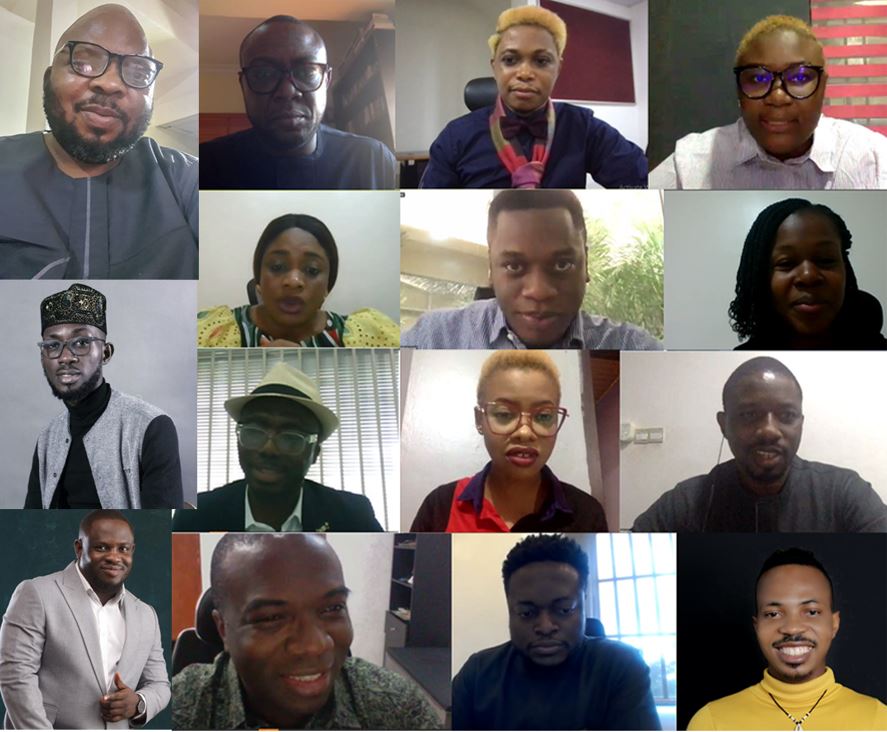In today’s digital era, consumer behaviour is fast-changing because of the enabling nature of digital technology and easy access to data. Consequently, marketing has undergone a lot of transformation as consumers now have a completely different journey than they used to.
Today’s consumer has largely evolved from the traditional media epoch where brands push content to his face to being a producer of his content in the digital era. While the digital transformation has changed the dynamics of marketing, the traditional media has proven that it is still much relevant as a potent tool for marketing, even in the present era. In the same vein, the dichotomy of the consumer in the different epochs has also brought a dilemma on marketers on how to ensure the right mix of both media to optimize marketing campaigns in order to achieve organisational objective.
The foregoing has posed many challenges for today’s marketeers in the Integrated Marketing Communications (IMC) industry and it was on this premise that MARKETING EDGE, Nigeria’s leading brands & marketing publications, gathered respected thought leaders and top-notch professionals in the industry at its second Quarterly Virtual Summit, held via zoom on 25th June, 2021, to proffer solutions to these challenges.
The summit, which had two panel sessions, featured thought leaders across the broad spectrum of the marketing communications sector discussing: “Winning in The Digital Economy: The Purpose Question and How to Win Reluctant Consumers” and “Digital Vs Traditional: The Conversion Rate Challenge”
The Founder and Managing partner, Open Square, Feyi Olubodun, while leading the discussion on the theme: “Winning in the digital economy: Purpose Question and How to Win Reluctant Consumers” gave a robust analysis on consumer insights, noting that the way to engage reluctant consumers is to penetrate beneath the surface (BTS). He added that the youths are the most active in the digital space, which is why they are called the digital natives as they are the real consumers.
Mr. Olubodun reiterated the need for brands to leverage the digital space to reach the young consumers as the population of Africa youth was put at 16% of the global population in 2015 and projected to grow two and half times more by 2060, thus increasing the share of the global population to 29% or one third of the total global population. He therefore urged brands to identify the consumer they are selling to and also identify the medium they are using to reach the target audience for their products.
In his words: “As a brand you must identify what makes your consumer different not what makes them the same. Often when digital strategies are being developed, we focus more on what makes consumers the same by joining trends, instead of identifying your consumers and getting what is different about them digitally and tapping into them.”
He advised that content creators should follow the steps of comedy content creative as they are able to create different kinds and formats of comedy online that are very unique to them and still get the attention of their target audience as some of them are very distinct in their language and format.
Corroborating Olubodun’s position, Franklin Ozekhome, Strategy and Planning Director, at Insight Publicis, stated that for organisations to thrive in a digital age and win their target consumers’ mind, they must connect by ensuring that whatever they are putting in the marketplace is from the consumer point of view.
In Ozekhome’s words: “Digital transformation doesn’t exist in a vacuum. I think we usually miss the point when we talk about how we can transform and ensure or connect with the new age consumers. Organisations should look at the issues that consumers are going through, why consumers should care about their (organisations) products and services, what consumers are doing presently and what they would do next and think of the role that they as a brand, product, service or platform will play in the life of consumers on a day to day journey. I believe that is the best way to always interact and engage with the consumer. Rather than trying to advertise or market to them from brand perspective or viewpoint, brands should ensure they deal with the consumer’s mind-set.”
He further explained that digitization has changed the face we of competition as it is no longer by category definition: “If your brand is targeting the youth and you are into beauty products, then another brand, let’s say telco is also targeting the youth. Then the telco becomes your competitors because everyone is targeting that share of the market, that share of fight.”
He then urged brands and agencies to redefine their purpose to suit what their target consumer needs, and not just the vision and mission of the brands such that the reluctant consumer can then become a loyal consumer.
“Look at the role of your brand in the life of the consumers. As they are living their life as it is, how can I amplify their aspiration, their ambition? Where are they headed to? Which tools can I create to boost their ambition that is the best way to connect to them? If you successfully do these, then these reluctant consumers will connect and gravitate towards you because you understand them. it is no longer about selling but ensuring that they also trust you and feel like your brand is authentic to their needs.”
For Emeka Obia, the Lead, Strategy and Planning, Leo Burnett, times have changed and culture is changing and according to him, this is demonstrated by the frenetic speed and connection enabled by technology. He added that it has happened on the continent and we have to move at that pace.
Mr. Obia said: “Because of what the world has faced especially the pandemic and more realities that we see today, it has become really critical to try to understand people, try to build our products, services and campaigns in such a way that we can connect and show empathy and clear understanding of the people that we are to relate with.”
He added that at the point where we are today, brands should move beyond what they are used to and what they stand for because we are in the era of what people interpret a brand to be based on what the relationship they have with the brand.
“One of the key things for brands today is ensuring that they begin that journey of building cultural equity, how to become more relevant in culture, how to become more relevant in people, how they are identifying the opportunities that exist today. This is the time where culture all of a sudden has become the front burner now more than ever. Locals have become more important, people are looking for ways to express themselves, ways that they can do different things in a way that is true to what they believe in.”
Leading the discussion on the Summit theme: “Digital Advertising Versus Traditional Media; the Conversion Rate Challenge”, Ose Osundeko, Group Head, Digital Marketing at Fidelity Bank Plc., held that for brands to be truly successful, digital technology must be integrated with traditional to meet up with the pace of consumers’ experience journey, highlighting the urgent need for marketing to evolve, as buyers’ behaviour are also evolving.
She revealed that consumers are already feeling excited about digital advertising, but stressed that the best value is achieved only when both are combined.
She further added that traditional media is very effective in creating awareness and also drives sales, while calling for a focus on content. “Focus on content and the channel by developing memorable contents that consumers remember and share with others. This will help increase the impact of conversion.”
Similarly, Dotun Babatunde, Head of Digital, Olam Nigeria Limited, noted that both digital and traditional media are effective in reaching the consumers, but advised that brands need to identify where the consumer is to enable them know the right channel to use.
“The future of what we are doing is not about the old versus the new; marketing has gone beyond digital versus traditional,” he said. He stated that consumers’ journeys are not the same in location and modes; and therefore urged content creators and brands to first of all understand who the consumers are, how to reach them and what they want.
In his words: “In reaching the consumer through a channel, it is better to go through the appropriate channel. You must be clear with your objective, know what you want to achieve in the campaign to enable you to track it.”
He therefore emphasized the importance of knowing the target audience whom he noted is different from the millennial in age and category, and who may love the same brand, but have different consumer experience journeys. This, he said, will result in a different conversion rate for each of them. The digital marketing expert therefore advised brands to create unit channels for consumers, understand their needs in details, as this will help to serve them better.
Another panelist, Omokehinde Thomas, Leader, Digital Business, Noah’s Ark Communications at The REDWOLF Company, on her part highlighted various means brand use in tracking conversion in both the digital and traditional media.
Making a comparison of audience and ROI measurement on both platforms , Ms. Thomas noted the digital is very easy to track through websites and other social platforms. For traditional, she stated that though it is a bit difficult to track, but it is also possible.
“For digital, it can be easy. But it can be a challenge in traditional media. Though it can be tracked through coupon and call-in-programmes by asking audience how they get to know about the product or programme, it is still a far cry from what obtains in the digital platform.”
She, however, corroborated other panelists’ position on the need for collaboration as one platform should not sit on its own, but should rather be integrated with the other.







Comment
No comments found.